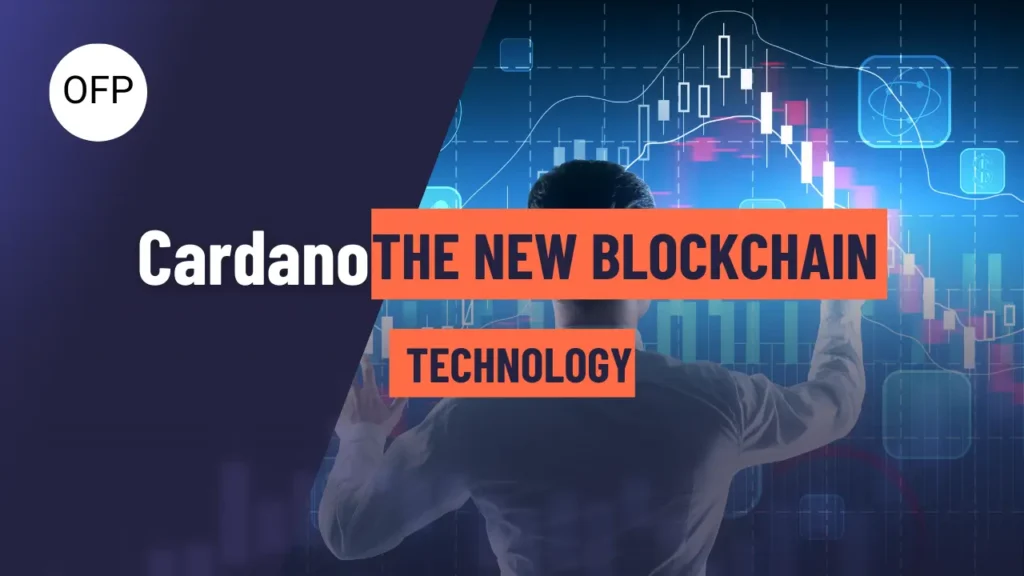In the fast-paced world of blockchain technology, innovation is key. This emerging platform “Cardano” offers more than just another cryptocurrency—it represents a fundamental shift in how we perceive and use decentralized systems. Built on a cutting-edge Proof of Stake (PoS) protocol, this third-generation blockchain is addressing the pressing challenges of scalability, high fees, and environmental impact.
Unlike earlier blockchains like Ethereum and Bitcoin, this technology emphasizes efficiency, accessibility, and sustainability. These attributes have rapidly propelled it to the forefront of the cryptocurrency world, making its native coin, ADA, a powerful symbol of its success.
Table of Contents
Beyond Cryptocurrency: Cardano is A Platform for Innovation
What sets Cardano apart is its versatility. It’s not just a digital currency but a platform enabling developers to create decentralized applications (dApps) through the use of smart contracts. These contracts automate processes on the blockchain, opening doors for innovative solutions across various industries.
For developers, the platform provides an intuitive and secure environment for building on the blockchain. It simplifies processes and prioritizes safety, offering an appealing alternative to more complex systems. Fueling these operations is ADA, the platform’s native cryptocurrency, which powers transactions and ensures network security.
Since the main network launch in 2021, this platform has attracted significant interest from developers eager to leverage its capabilities. This growth has not only expanded the platform’s ecosystem but also added value to ADA, reflecting the increasing trust and adoption among users.
Key Features of a Game-Changing Blockchain
Unlike traditional blockchains that consume enormous energy, Cardano operates with sustainability at its core. Its Proof of Stake model allows users to participate in securing the network without energy-intensive mining processes. Instead, users stake ADA as collateral, enabling transaction validation and network functionality.
The platform’s open protocol ensures that anyone can contribute, whether by securing the network, processing transactions, or developing applications. This inclusivity fosters collaboration and innovation, making it a community-driven ecosystem.
Another unique feature is the platform’s support for microtransactions. ADA, which can be divided into smaller units called lovelaces, facilitates payments that were previously impractical with conventional currencies. This capability unlocks new possibilities in areas like remittances and digital micropayments.
The Visionary Behind the Innovation
Cardano’s story begins with Charles Hoskinson, a visionary who sought to address the limitations of first- and second-generation blockchains. Hoskinson’s experience as a co-founder of Ethereum gave him unique insights into the challenges of scalability, interoperability, and sustainability.
After parting ways with Ethereum due to differing visions, Hoskinson founded Input Output Hong Kong (IOHK) in 2014. This organization became the driving force behind the new blockchain platform. Collaborating with the Cardano Foundation and Emurgo, IOHK has established a robust framework for both technological advancement and real-world adoption.
A key aspect of the platform’s development is its commitment to academic rigor. Built on the Haskell programming language, the system incorporates peer-reviewed research to ensure reliability and long-term viability. This scholarly approach sets it apart in a space often driven by rapid, unchecked experimentation.
The Technology Behind the Blockchain
At the heart of Cardano lies Ouroboros, a unique PoS consensus mechanism that revolutionizes blockchain efficiency. Unlike Bitcoin’s Proof of Work (PoW), which relies on energy-intensive mining, Ouroboros ensures secure transactions by leveraging ADA stakes.
Validators, who are selected based on their investment and stake duration, maintain the network and are rewarded for their contributions. For those who prefer not to become validators, delegating ADA to staking pools offers another way to earn rewards, making participation accessible to a wider audience.
The blockchain’s dual-layer architecture enhances its functionality. The Settlement Layer handles transactions, while the Computing Layer executes smart contracts. This separation optimizes performance and scalability, aiming to handle up to a million transactions per second in the future.
Why The Cardano Blockchain Stands Out
In 2024 and beyond, this platform remains a leader in sustainable blockchain solutions. While Ethereum continues its gradual transition to PoS, this system has already established a fully operational and efficient framework. This head start highlights its commitment to innovation and adaptability in a rapidly evolving industry.
By prioritizing academic research and rigorous peer review, the platform minimizes risks and ensures long-term stability. Its forward-thinking approach makes it a reliable choice for developers, investors, and users alike.
Trading ADA: Opportunities for Growth
For traders, ADA presents exciting opportunities. Its use cases and growing ecosystem position it as a valuable asset in the cryptocurrency market. With platforms like OFP Funding offering tailored trading accounts for crypto enthusiasts, individuals can tap into the market’s potential while leveraging expert support and resources.
The platform’s unique combination of innovation, sustainability, and inclusivity makes it a standout in the blockchain space. Whether you’re a developer, trader, or blockchain enthusiast, this ecosystem offers tools and opportunities to thrive in the decentralized future.
Ready to Elevate Your Trading with Higher Leverage and Customizable Profit Split Options? CLICK THE BUTTON BELOW and customize your Instant Funded account with OFP Funding today!

